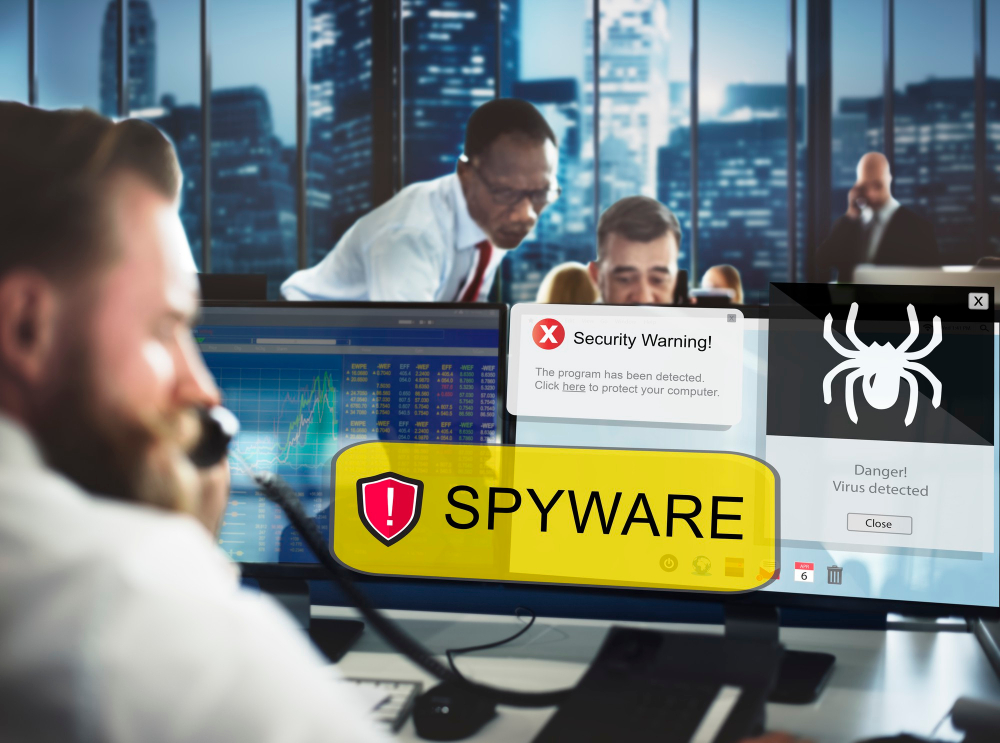In today’s digital landscape, cyber threats like Trojans, viruses, and other forms of malware are more prevalent than ever. These malicious programs can compromise your personal information, slow down your PC, and even lead to financial losses. Protecting your PC from these threats is not just a matter of convenience—it’s a necessity.
This guide explores how Trojans and malware infiltrate systems, the dangers they pose, and actionable steps you can take to safeguard your PC effectively.
Understanding Trojans and Malware
What Are Trojans?
Trojans are malicious programs disguised as legitimate software. Unlike viruses, they do not replicate themselves but act as gateways for hackers to steal data, install other malware, or control your system remotely.
Common Types of Malware
- Viruses: Infect files and spread across systems.
- Worms: Spread through networks without user action.
- Spyware: Monitors your activity to steal personal data.
- Ransomware: Locks your files until you pay a ransom.
- Adware: Bombards your PC with unwanted ads.
Understanding these threats is the first step toward protecting your PC.
How Trojans and Malware Infect Your PC
- Phishing Emails: Clicking on malicious links or downloading attachments.
- Infected Software: Installing software from unverified sources.
- Compromised Websites: Visiting sites that host malicious scripts.
- External Devices: USB drives or external hard drives carrying malware.
- Unsecured Networks: Using public Wi-Fi without proper safeguards.
Steps to Protect Your PC from Trojans and Malware
1. Install Robust Antivirus Software
A reliable antivirus program is your first line of defense. Top-rated options include:
- Norton Antivirus
- Bitdefender
- Kaspersky Total Security
- Microsoft Defender (Windows)
Ensure the software provides real-time protection, regular updates, and comprehensive scanning options.
2. Keep Your Operating System and Applications Updated
Software updates often include patches for security vulnerabilities.
- Enable Automatic Updates: Keep your system up-to-date without manual intervention.
- Prioritize Critical Updates: Apply security patches as soon as they are available.
3. Use a Firewall
A firewall acts as a barrier between your PC and potential threats from the internet.
- Windows Firewall: Built into Windows, offering basic protection.
- Third-Party Firewalls: Advanced options like ZoneAlarm or Comodo Firewall.
4. Avoid Suspicious Links and Downloads
- Verify Email Senders: Avoid clicking links or downloading attachments from unknown senders.
- Stick to Trusted Sources: Download software only from official websites or app stores.
5. Enable Two-Factor Authentication (2FA)
2FA adds an extra layer of security by requiring a second verification step.
- Use apps like Google Authenticator or Microsoft Authenticator.
- Enable 2FA for email, banking, and other critical accounts.
6. Regularly Scan Your PC
Run full system scans at least once a week:
- Quick Scan: Checks common malware hiding spots.
- Full Scan: Examines your entire system for threats.
7. Use Strong, Unique Passwords
Weak passwords are an open invitation to hackers.
- Create Strong Passwords: Use a combination of letters, numbers, and symbols.
- Password Managers: Tools like LastPass or Dashlane can help manage secure passwords.
8. Be Cautious with External Devices
Scan USB drives and external hard drives before opening files:
- Use your antivirus software to scan the device.
- Disable autoplay to prevent automatic execution of malware.
9. Secure Your Network
Unsecured networks are prime targets for cyberattacks.
- Encrypt Your Wi-Fi: Use WPA3 encryption for maximum security.
- Change Default Router Settings: Update the default admin username and password.
10. Backup Your Data Regularly
Regular backups ensure you can recover your data in case of an infection.
- Cloud Storage: Services like Google Drive or OneDrive.
- External Drives: Keep backups on encrypted USB drives or hard drives.
Signs Your PC Might Be Infected
- Unusual Pop-Ups: Frequent ads or system alerts.
- Slow Performance: Programs take longer to open, and your PC lags.
- Unrecognized Programs: Applications you didn’t install.
- Frequent Crashes: The system freezes or restarts unexpectedly.
- High Network Activity: Data usage spikes without reason.
If you notice these signs, act quickly to remove the malware.
What to Do If Your PC Is Infected
- Disconnect from the Internet: Prevent malware from communicating with its source.
- Boot into Safe Mode: Run diagnostics without third-party programs interfering.
- Run a Full System Scan: Use your antivirus software to detect and remove threats.
- Uninstall Suspicious Programs: Check the Control Panel or Task Manager for unrecognized applications.
- Restore Your System: Use a clean backup if malware persists.
Tools to Enhance Your Protection
- Malwarebytes: Detects and removes malware missed by antivirus programs.
- AdwCleaner: Targets adware and PUPs (Potentially Unwanted Programs).
- RogueKiller: Identifies and removes advanced threats.
Best Practices for Long-Term Protection
- Stay Informed: Follow cybersecurity blogs and news to stay updated on new threats.
- Educate Yourself and Others: Teach family members about safe browsing habits.
- Enable Browser Extensions: Tools like uBlock Origin or HTTPS Everywhere enhance online security.
- Monitor Your Accounts: Regularly check financial and social media accounts for unauthorized activity.
Conclusion
Protecting your PC from Trojans and other malware infections requires a combination of vigilance, the right tools, and consistent practices. By implementing the steps outlined in this guide, you can significantly reduce the risk of cyberattacks and ensure your PC remains secure. Remember, cybersecurity is an ongoing process, and staying proactive is the key to keeping your digital life safe.







